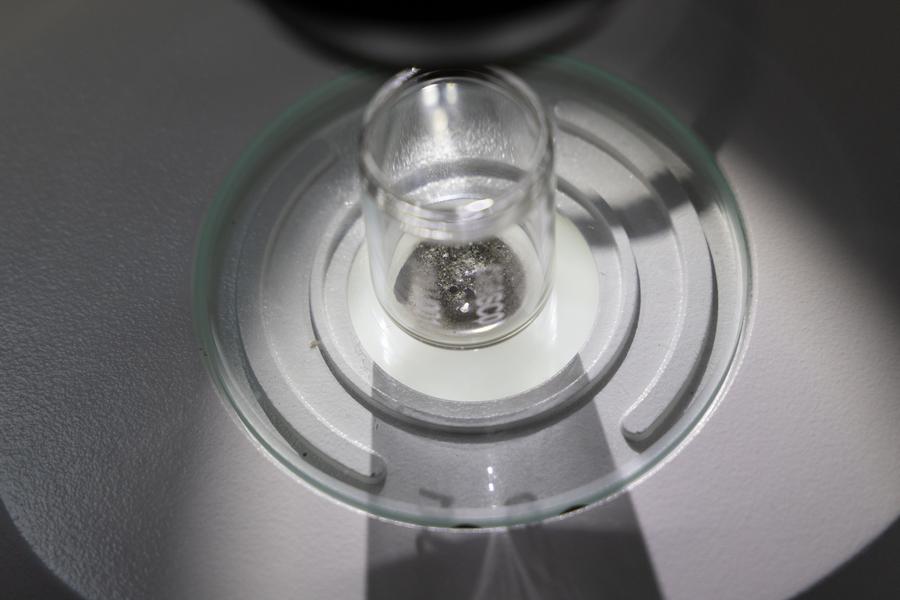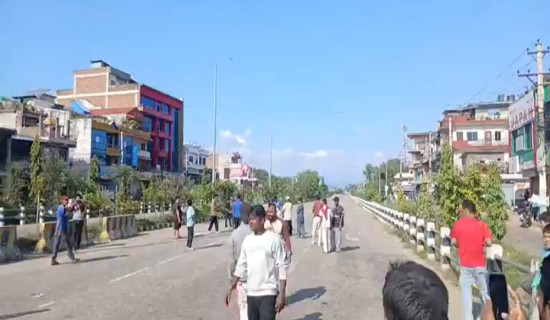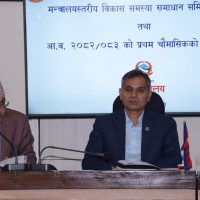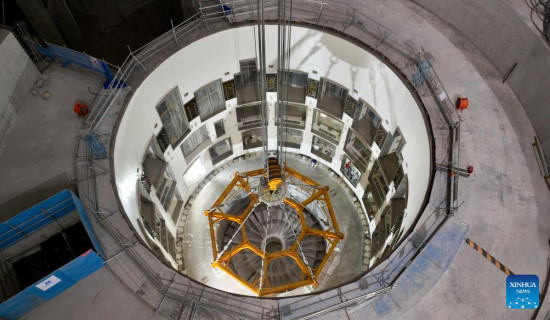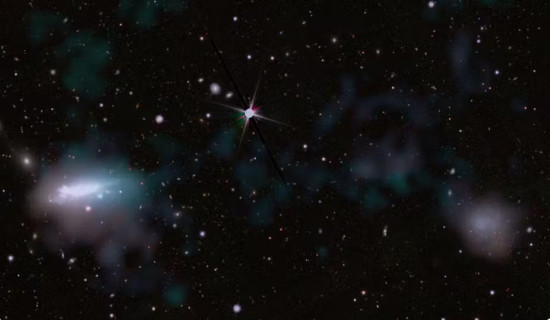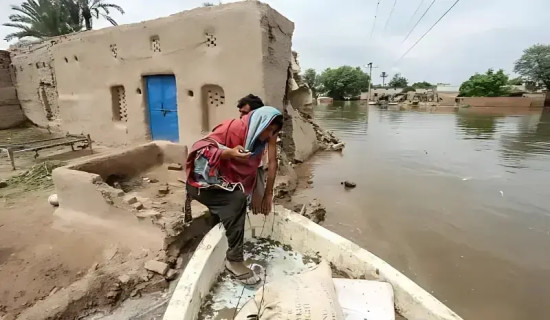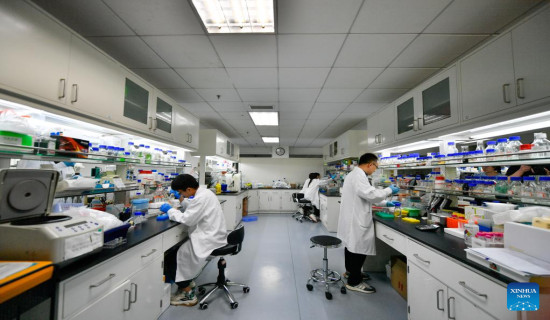- Thursday, 20 November 2025
Chinese scientists uncover thermal mechanism of moon's young volcanoes
BEIJING, Aug. 23: A recent study of lunar samples collected by the Chang'e-6 mission has revealed the thermal driver behind the moon's young volcanoes, offering new insights into the different evolution of its near and far sides and updating understanding of lunar thermal history, according to a paper published in Science Advances on Saturday.
Scientists have long believed that the moon went "dormant" about 3 billion years ago, with volcanic activity largely ceasing. However, China's Chang'e-5 and Chang'e-6 missions brought back basalt samples formed 2 billion and 2.8 billion years ago, respectively, confirming that volcanic eruptions still occurred on the moon during its so-called "later years."
This raises a key question about the thermodynamic mechanism that supported the moon's continued volcanic activity in its later years, spanning from about 3 billion years ago to the present.
A team from the Chinese Academy of Sciences' Guangzhou Institute of Geochemistry, led by Wang Chengyuan and Xu Yigang, along with counterparts from other institutions, identified two types of basalts in the Chang'e-6 samples. These basalts, formed around 2.8 and 2.9 billion years ago, differ in composition and depth of origin despite their similar ages.
One type is the very-low-titanium basalt originating from the relatively deeper lunar mantle more than 120 km under the surface, while the other, low-titanium basalt, comes from a shallower part of the lunar mantle 60 to 80 km under the surface.
By simulating the high-temperature and high-pressure environment inside the moon, the researchers found that the two types of basalts originated from separate layers formed after the early lunar magma ocean cooled, with one from a common pyroxenite layer and the other from an ilmenite-bearing pyroxenite layer.
According to traditional views, young lunar volcanism might be related to water-rich sources or radioactive heat-producing elements. However, the sources of the basalts collected by Chang'e-5 and Chang'e-6 missions were both dry and depleted in radioactive heat-producing elements, refuting this hypothesis.
Based on a comparison of the two types of basalts, the research team proposed a new mechanism. As the moon cooled, its lithosphere thickened, making it difficult for deep magma to erupt directly. Instead, it became trapped at the bottom of the shallow pyroxenite layer in the lunar mantle. This trapped magma conducted heat upward, triggering partial melting in the shallow lunar mantle and leading to volcanic eruptions.
To further validate this proposed model, the team analysed global lunar remote sensing data and identified a shift in the thermodynamic mechanism of lunar volcanic activity around 3 billion years ago. Before that time, heat sources were complex and varied, possibly including radioactive materials, tidal forces and meteorite impacts.
Since 3 billion years ago, the mechanism has become more uniform, dominated by bottom-up heat transport that concentrated the sources of young volcanic activity in the shallow mantle.
Further analysis of global lunar remote sensing data revealed that the chemical characteristics of young volcanic rocks on the near side of the moon are largely similar to the basalts brought back by Chang'e-5, while those on the far side are closer to the very-low-titanium basalts retrieved by Chang'e-6.
This suggests that the composition of the lunar mantle may differ between the near and far sides. The shallow mantle on the near side contains more ilmenite, while the far side has relatively less. The findings provide new clues to understanding the asymmetric evolution of the moon.
The Chang'e-6 probe was launched from China on May 3, 2024. On June 25, 2024, its returner landed in north China, bringing back 1,935.3 grams of samples from the far side of the moon.

